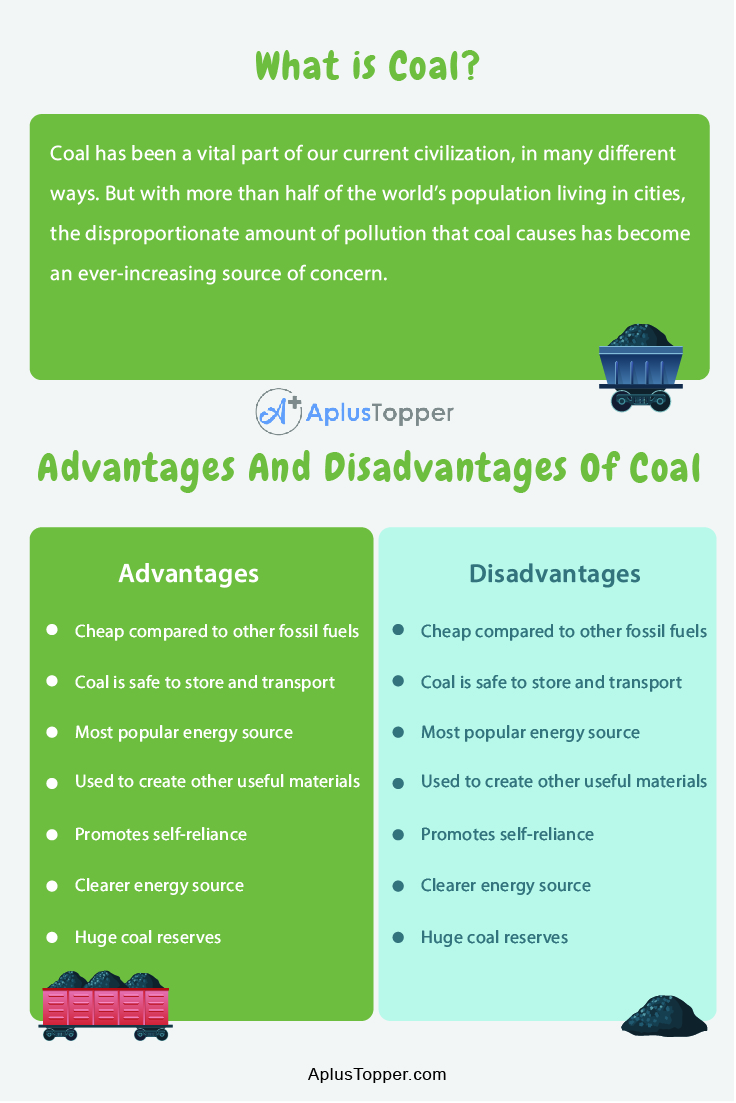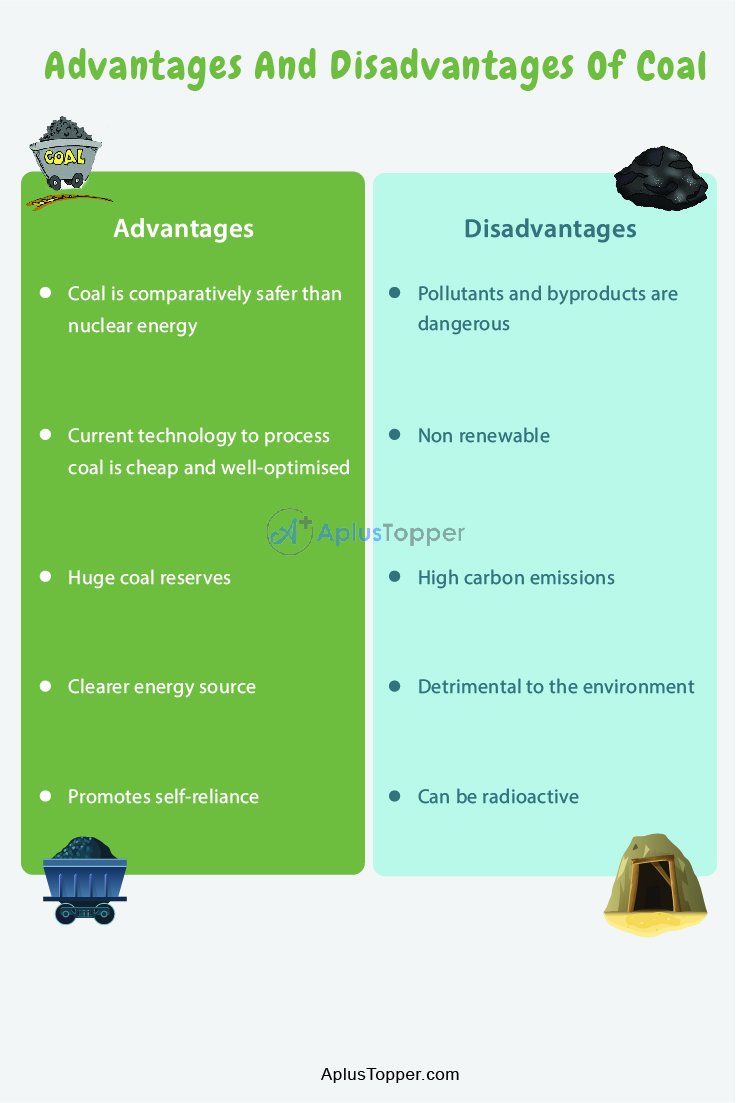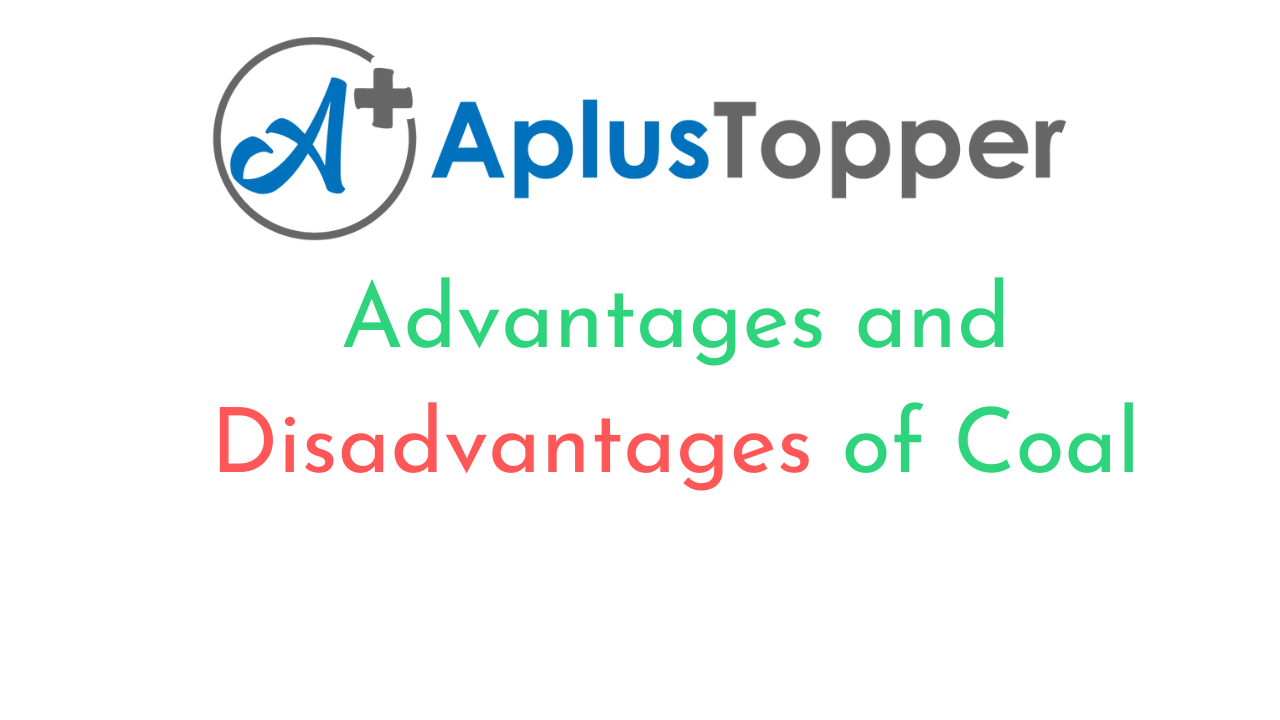Coal Advantages And Disadvantages: Coal has been a vital part of our current civilization, in many different ways. But with more than half of the world’s population living in cities, the disproportionate amount of pollution that coal causes has become an ever-increasing source of concern. This article discusses the pros and cons of coal and natural gas, and its effect on human health.
Before that, we need to understand what coal is: Coal is a type of combustible, black, sedimentary rock composed mainly of carbon and hydrogen. It is formed from dead plants and animals that have been compressed over millions of years by burial and fossilisation. Coal contains about 77 percent carbon, 13% hydrogen and 10% oxygen. Though coal is used to generate electricity in steam-electric power plants, it can also be used for industrial purposes such as coke production. There are two basic types of coal, hard coals and soft coals. Hard coals are primarily used as fuel and they can be used to make a number of different products such as petrochemicals, steel, or electricity. Soft coals are primarily used for making glass, ceramics, and bricks because they have more silicon than carbon and less ash content.
Students can also find more Advantages and Disadvantages articles on events, persons, sports, technology, and many more.
Mining for coal is a dirty business. Coal mining produces a variety of environmental and health problems, ranging from the depletion of natural resources to increased greenhouse gas emissions. It also has implications for human health, causing respiratory disease and increasing the risk of cancer.
- Advantages of Coal
- Disadvantages of Coal
- Comparison Table for Advantages and Disadvantages of Coal
- Conclusion on Coal Advantages And Disadvantages
- FAQs on Coal Advantages And Disadvantages
Advantages of Coal
Following are a few advantages of coal:
- Cheap compared to other fossil fuels: Coal is considered the cheapest fuel to produce and burn because it produces higher amounts of energy in a shorter time frame, compared to other fossil fuels. It is also one of the cleanest fuels to produce because it burns itself and doesn’t create any pollution. In comparison, oil requires more refining processes that can produce more pollution. The average coal plant produces 28 percent less carbon dioxide than an average oil plant.
- Coal is safe to store and transport: Coal can be transported safely as long as it is used in a controlled environment. This includes trucks, railcars, and barges. Truck fleets are the most popular way to transport coal because they cover the largest distance and have the ability to haul huge amounts of material for those who need it. Alternatively, railcars are also popular because they offer much larger hauling capacity over road trucks.
- Most popular energy source: Coal is a versatile resource, with the ability to produce more electricity than any other fuel. The benefits of using coal over anything else are plentiful: coal’s versatility makes it easy to convert into a variety of resources and fuels, such as steam and gas, making coal a reliable and safe option.
- Used to create other useful materials: Coal is a raw material that can be used to create other useful products. These include fertilisers and pesticides, which are paramount for agriculture. Other non-energy processes that use coal include cement, naphthalene, phenol and steel manufacturing.
- Independent of weather and climatic conditions: Coal is ideal for countries who have limited natural resources or are located in areas that have unfavourable weather conditions for renewable energy. Hence, coal could be considered as more reliable than wind and solar energy.
- Promotes self-reliance: One of the biggest advantages of using coal is that it is a local resource. This means that it’s not really dependent on whether or not other countries have fuel to export. Using coal also allows countries to consume more of their own natural resources which can reduce the dependence on foreign oil imports.
- Clearer energy source: Coal is today a cleaner energy source than it was in the past. The most recent clean coal research has focused on the possibility of using coal as a primary energy source in order to reduce pollution and greenhouse gas emissions. It would also have other benefits, from preservation of the ecosystem to sustainability and self-reliance.
- Huge coal reserves: Coal is more abundant than oil, gas and renewable energy sources on Earth. Coal reserves are estimated to be around 246 billion tons with an additional 83 billion tons of coal resources. Scientists estimate that our current coal reserves are enough to last another 300 years.
- Current technology to process coal is cheap and well-optimised: Coal is considered to be one of the least expensive fuel sources, with investment cost being just a fraction when compared to solar, wind, or geothermal. This is because the technology and infrastructure required to process coal is widely available and extremely well-optimised.
- Coal is comparatively safer than nuclear energy: Granted, coal may have its own environmental issues, but those completely dwarf the hazards of nuclear energy. The most infamous example of a nuclear accident is the Chernobyl Disaster.
Disadvantages of Coal
Following are a few disadvantages of coal:
- Can be radioactive – Coal has been used for centuries and is still a major fuel source. There are many disadvantages that come with using coal, but the biggest one is potential radiation. Coal can be radioactive from the factories where it starts out to the power plants that process it. The carcinogenic particles released during burning of coal are very small and can enter our lungs, bloodstream, or digestive tracts.
- Detrimental to the environment – Coal can harm the environment because it destroys natural habitats, pollutes the air and water, and causes acid rain. Another disadvantage of using coal is that it decreases the survival rates of a species due to an increase in global warming.
- High carbon emissions – Coal has been around for a long time and has always been a popular source of fuel. However, many people believe that coal is not just a dangerous resource to the environment, but also to human health. Coal emits high levels of carbon emissions into the air, which can cause issues with global warming, acid rain, and air pollution. In addition, coal mining creates high levels of noise pollution and health hazards for miners.
- Non renewable – This is very obvious, coal is a non-renewable source of energy, which means it can’t be replaced or replenished. Moreover, coal emits a lot of harmful gases like carbon dioxide and methane into the air, which have been shown to negatively affect the environment. It’s also not a very efficient source of energy when compared to clean sources like wind or solar power.
- Pollutants and byproducts are dangerous – Coal emits deadly pollutants into the air including mercury, arsenic, and sulphur dioxide. The sulphur dioxide emitted by coal also causes acid rain. In addition, coal creates large amounts of greenhouse gases that contribute to global warming. Interestingly, a study showed that individuals who were exposed to coal for prolonged periods of time were found to have an increased risk of lung cancer.

Comparison Table for Advantages and Disadvantages of Coal
Following are the advantages and disadvantages of Coal.
| Advantages | Disadvantages |
| Coal is comparatively safer than nuclear energy | Pollutants and byproducts are dangerous |
| Current technology to process coal is cheap and well-optimised | Non renewable |
| Huge coal reserves | High carbon emissions |
| Clearer energy source | Detrimental to the environment |
| Promotes self-reliance | Can be radioactive |
| Independent of weather and climatic conditions | |
| Also used to create non-energy related materials (steel, carbon fibre etc) | |
| Most popular energy source | |
| Coal is safe to store and transport | |
| Cheap compared to other fossil fuels |

Conclusion on Coal Advantages And Disadvantages
The advantages of using coal include the fact that coal is one of the cheapest sources of energy and that it is easy to find. In addition, coal can be used in many different ways including generating electricity, producing heat, and manufacturing chemicals. The disadvantages of using coal include the fact that it is an environmentally unfriendly source of energy as well as being a source of pollution.
FAQ’s on Coal Advantages And Disadvantages
Question 1.
What are the advantages and disadvantages of using coal?
Answer:
Coal is a natural energy source that is both plentiful and relatively inexpensive. However, it does have its disadvantages. Moreover, coal mining can be dangerous, especially if the mine caves in. Furthermore, coal has a high CO2 footprint which is often frowned upon by environmentalists.
Question 2.
Why is using coal bad?
Answer:
Coal is a fossil fuel that burns and produces carbon dioxide, which is one of the main contributors to global warming. The burning of coal releases harmful pollutants, like sulphur dioxide and particulates into the air. This can lead to respiratory diseases and other health problems.
Question 3.
What are the effects of coal on human health?
Answer:
Coal is the most consumed fuel worldwide, but most people are unaware of the risks it poses to human health. It has been linked to respiratory diseases, heart disease, and cancer.
The major effects of coal on human health include:
– Respiratory illnesses
– Including asthma: bronchitis and emphysema
– Heart diseases: including congestive heart failure and coronary artery disease
– Breast cancer: which has been found to be primarily caused by exposure to coal dust
